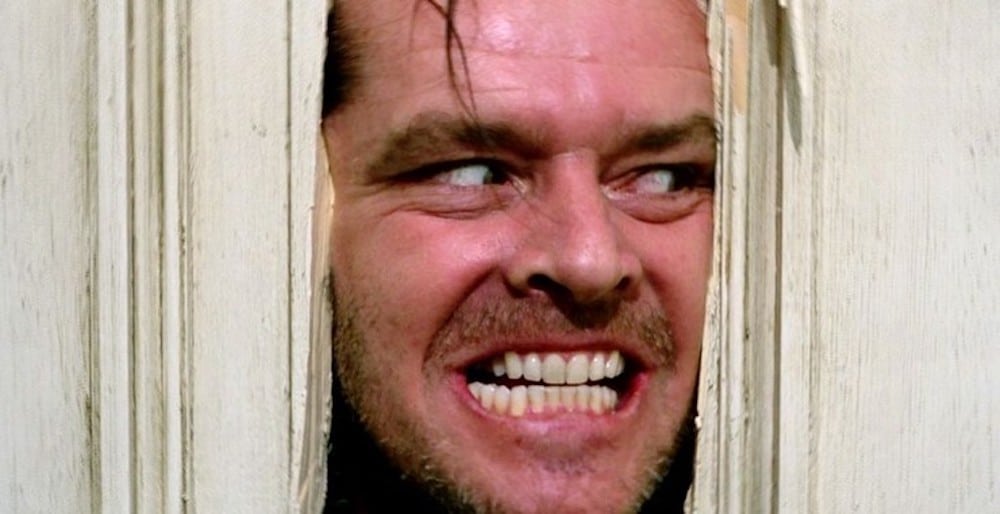In the horror genre, there are numerous classics that have stood the test of time. Very few of these are universally hailed as pure classics of cinema. Until recently, horror has been derided for its reliance on jump scares or gore but these classics will continue to hold up the craft.
The Shining
Based on the popular novel by Stephen King, acclaimed director and infamous perfectionist Stanley Kubrick decided to create a big screen adaptation of the classic story. The production of the film is as legendary as the film itself; from Kubrick’s truly abhorrent behavior towards actress Shelley Duval, Jack Nicholson being pushed to the limits of his abilities and King’s disdain for the finished product. While the Overlook Hotel is now one of cinema’s most infamous settings, it provides a truly terrifying location. For one, it is an incredibly isolated location where help is not going to come if you are in trouble and there is no escape as the roads are under several feet of snow, the phone lines are down and the temperatures are well below freezing. The isolation quickly leads to frustration and boredom for Jack Torrance as he hopes the quiet and isolation will grant him time to write the next great American novel but the opposite is achieved. Secondly, the Overlook plays host to a wide menagerie of ghosts complete with horrifying stories of murder and dismemberment. Jack’s descent into madness along with Danny’s struggle against the spirits is horrifying to watch but those elements are just part of what makes The Shining so scary. For all of his flaws, Stanley Kubrick was a master filmmaker and his craft is on full display here. The film is famous for its use of long tracking shots of Danny riding his big wheel when he suddenly encoutners the creepiest set of twins even put into a movie. What makes The Shining so unsettling is the soundtrack composed by Wendy Carlos and Rachel Elkind which makes use of tri tones also known as “the Devil’s tone”. Tri tones are designed to be unsettling and were even banned from being performed in churches at one point and they are prominent throughout The Shining. It is the definition of an iconic film; the performances, the setting, the music and the story have cemented The Shining as a crowning achievement for not just Stanley Kubrick but for the entire history of the horror genre.
Psycho
Have you wondered how the slasher subgenre was created? Well, we have Alfred Hitchcock to thank for that. Another director known for his abhorrent behavior; Hitchcock had proven that he relished his opportunities to screw with his audiences. The idea of killing the main character halfway through the movie was unthinkable at the time and that is addition to showcasing the brutal murder of Marian Crane in the shower. Psycho does a brilliant job of making you believe that you are watching something other than a horror film but all of that changes when Marian arrives at the Bates Motel and meets the odd proprietor named Norman where he reveals his close relationship with his mother. Psycho was not afraid to be shocking by not only killing Marian but also the private detective who arrives to investigate her disappearance but the shocking moment to end all shocking moments is the reveals that Norman’s mother, who was thought to be the killer, has been dead for years and Norman has adopted her persona after he murdered her and uses her personality to act out his aggression. The final of his mother’s voice narrating his stream of consciousness is brilliant filmmaking and suggest that the mother persona has taken over Norman. If you pay close attention, a skull is super imposed over Norman’s face as he eerily smiles directly at the camera. Psycho’s impact on cinema and culture is immeasurable; it became the highest grossing film of all time, Bernard Hermann’s iconic score is known from just four notes and forever created a subgenre of horror. This another film where the lore that emerged from both its filming and release is voluminous. As part of the release, Hitchcock actually recorded a brief introduction that accompanied the film and essentially served as the first spoiler alert and instructed theaters to not seat anyone after the film had started. Then there is Hitchcock’s treatment of star Janet Leigh and the numerous “pranks” he pulled on set as well as making rehearse the shower scene several times. Hitchcock probably did not know how to interact with people but he sure as hell knew how to craft a lasting thriller.
The Exorcist
It seems like the most enduring films have some type of a tumultuous production cycle and this classic from 1973 is no different. There were fires on the set, a sprinkler system malfunction that caused thousands of dollars’ worth of damage, permanent injuries to both Linda Blair and Ellen Burstyn, crew members who suffered accidental amputations, deaths of actors during filming as well as those associated with the film have all fueled speculation that The Exorcist was, or is, cursed. For those unfamiliar with the plot of The Exorcist, I would not cast any aspersions. The possession subgenre of horror has been full of many imitations that do not measure up to the original. What The Exorcist excels at is making the audience connect to the main characters that is absent from most films of the genre and helps the audience grow and become protective of young Regan. That is not to say that The Exorcist is light on the thrills and chills but it does take a long time to get there but it is essential to develop Chris as a loving, caring mother and Father Karras as a man whose faith is shaken following the sudden death of his mother and to feel terrified for the fate of Regan, a vibrant, creative young woman who is powerless to combat the influence of the demon Pazuzu. The second half of The Exorcist is enough to put even the most hardened horror fan to the test. Regan’s face becomes more and more wounded as the possession takes hold, her mother becomes the victim of an assault from Pazuzu and questions begin to arise as Regan becomes the prime suspect in a murder investigation. When the exorcism is set to take place, the rest of the film focuses on Father Lankester Merrin, who reappears after only being in the prologue, Father Karras and Regan who is now under the full control of Pazuzu but ends on a tragic note as both priests are dead but Regan is saved and leaves with her mother to try and rebuild their lives. The Exorcist became a massive hit in 1973 in spite of controversial production as it was the highest grossing horror film of all time until the release of It in 2017 and was nominated for 10 Academy Awards becoming the first horror film to be nominated for Best Picture. It provided immediate legitimacy to a maligned genre.
Featured Image Credit: Rotten Tomatoes



